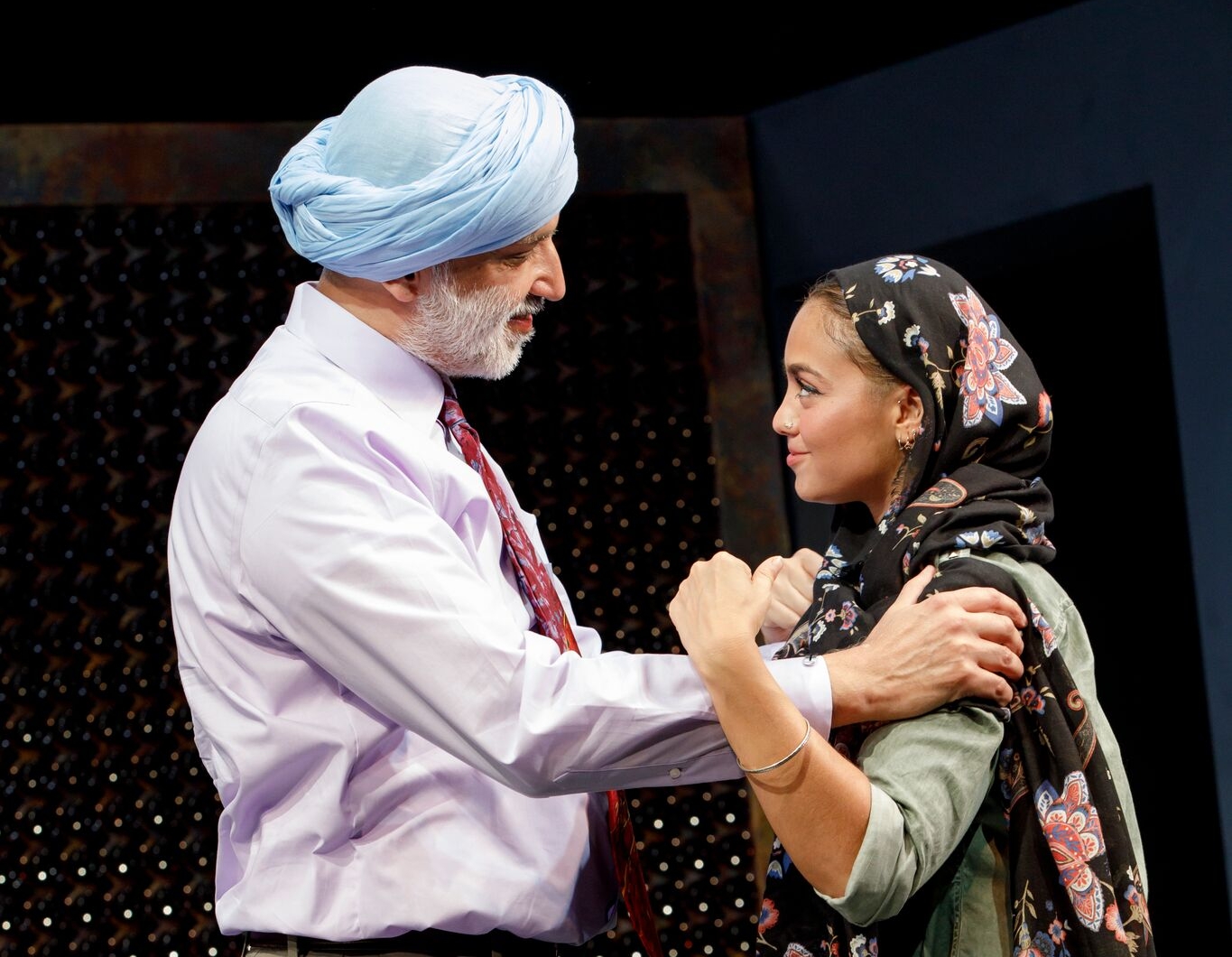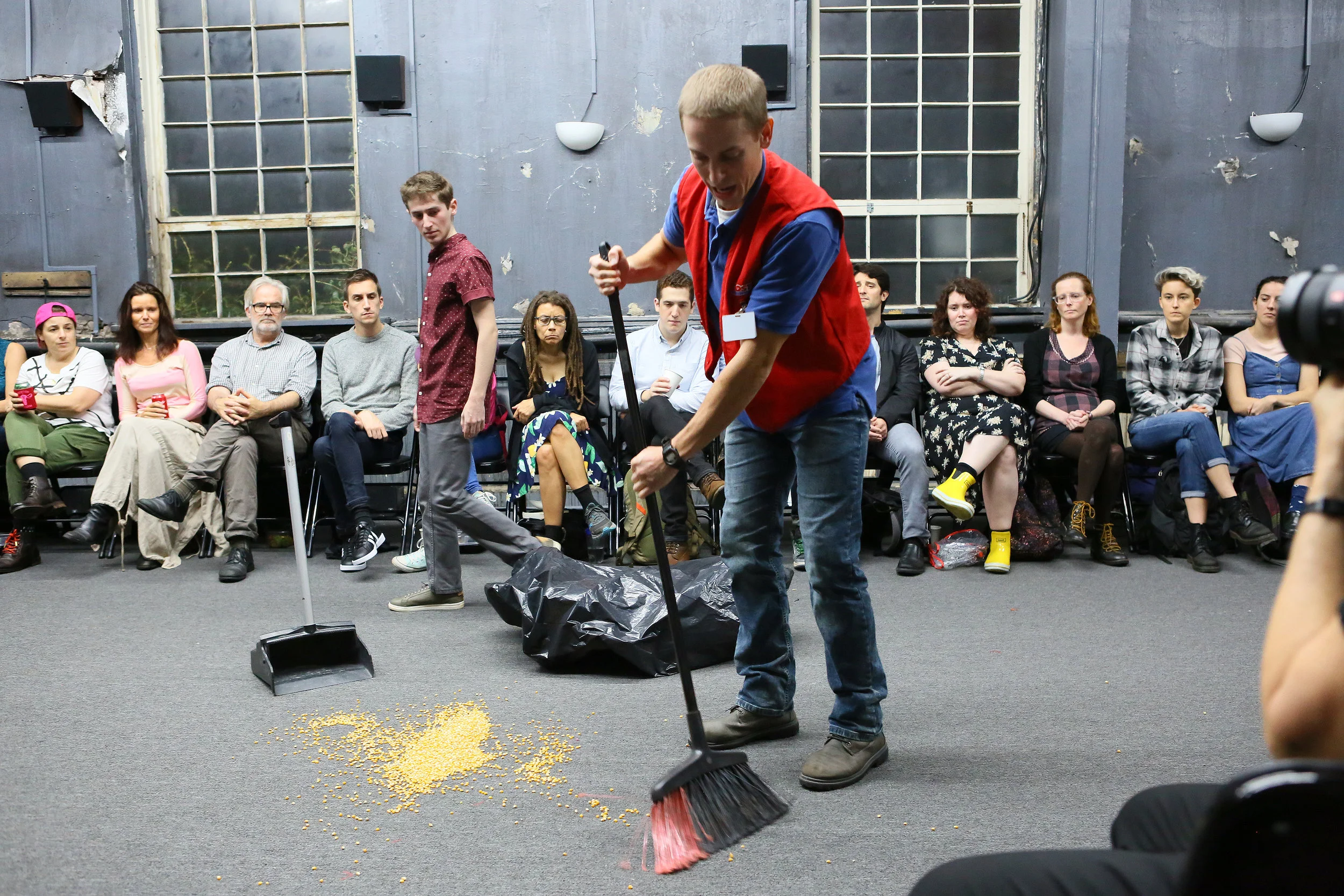A weird and wonderful selection of Off Broadway plays this month. Five full reviews below, right after these summaries.
GLORIA: A LIFE Christine Lahti plays the feminist hero Gloria Steinem. Best part: Her relationship with her troubled mother. Worst: Doing an ordinary audience talkback and calling it Act II.
KENNEDY: BOBBY’S LAST CRUSADE Yep, 50 years have passed since Robert F. Kennedy was assassinated in Los Angeles. David Arrow brings his 1968 campaign alive again. Best part: Freckles the dog.
INDIA PALE ALE A Punjabi-American family don’t understand why their grown daughter wants to leave home and open a bar. Then Old World values clash with America’s fatal flaws. Best part: The Bollywood dance number.
LEWISTON/CLARKSTON What wonders have Lewis and Clark’s explorations wrought? In these two one-acts, all we can see are cheap fireworks and big-box stores. Verdict: Loved Lewiston.
BERNIE AND MIKEY’S TRIP TO THE MOON An Italian-American family with a brain-damaged daughter compete to be noblest. Best part: Meeting Jeff Goldblum.
_________________________________
FULL REVIEWS START HERE
GLORIA: A LIFE
Daryl Roth Theater, 101 East 15th Street, Union Square, gloriatheplay.com. 2 hours. Open run.
BACK TO THE ‘70s Christine Lahti as Gloria Steinem in “Gloria: A Life.”
SARA HOLDREN OF NEW YORK MAGAZINE called it “a unique, deeply moving experience.” Jesse Green (who, through no fault of his own, is a man) of The New York Times called it a “paint-by-numbers portrait.” It pains me greatly to say this, but I agree mostly with the guy.
MIRROR MIRROR Lahti in “Gloria: A Life,” next to a projection of Steinem.
For those of you visiting from Neptune: Gloria Steinem was the most important American feminist of the 20th century. And so far, at age 84, she is going strong in the 21st.
Born in Toledo, Ohio, in 1934, she went to Smith College and became a journalist. One of her most famous works for a 1963 issue of Show magazine in which sent went undercover as a Playboy Club bunny. She helped found New York magazine and was the driving force behind the founding of Ms. magazine in 1970. If she had never said anything more intellectual than “A woman without a man is like a fish without a bicycle,” that would have been enough..
THIS IS WHAT STRONG LOOKS LIKE Gloria Steinem in an undated photograph from her website.
So I had high, if not exalted, hopes for this show, written by Emily Mann, the longtime artistic director of the esteemed McCarter Theater Center in Princeton, and directed by Diane Paulus, the artistic director at the American Repertory Theater at Harvard, whose previous triumphs have included “The Gershwins’ Porgy and Bess” and the 2013 revival of “Pippin.”
And I’ve loved Christine Lahti, who plays Steinem, since “Swing Shift” (the 1984 World War II home-front movie). Lahti is very good here, but her feminist sincerity feels — acted. When she stands onstage (actually the theater floor; it’s an in-the-round production) doing a black-power salute with Fedna Jaquet, playing Angela Davis, it’s inspiring until your eyes glide to the projection above them — the real Steinem and the real Davis in the same pose. That, my friends, was what fierce looked like.
YOU HAD TO BE THERE Lahti and
“Gloria: A Life” is far from a one-woman show, and the performance-impersonations add a good deal, They include the gleefully loudmouthed ‘70s NYC politician Bella Abzug and the Native American leader Wilma Mankiller.
SISTERHOOD ACT From left, Emily Mann, Diane Paulus, Lahti, Steinem and the producer Daryl Roth on opening night.
You know, though, what I really hated about “Gloria: A Life”? All the press-release descriptions “explained” that Act I would be Steinem’s story and that Act II would be a special roundtable workshop, dealing with the audience members’ own lives and experiences..
Ladies, it was just another after-theater Q&A talkback. These things almost always go wrong because the “real people” in the audience love hearing themselves talk so much more than they love learning anything new from the cast or crew. As a critic, I almost always don’t attend them because they can color my impression of the production. But in this case I was tricked.
___________________________
INDIA PALE ALE
City Center, 131 West 55th Street, Midtown indiapalealeplay.com, 2 hours. Limited run: Closed on Nov. 18.
YOU’RE LUCKY I’M SPEAKING PUNJABI, MISSIE! Dadi (Sophia Mahmud), far right, makes a speech in an early scene from “India Pale Ale.”
UNLESS YOU’D READ the notes in the Playbill, you’d never know that Jaclyn Backhaus’s “India Pale Ale” took place in Wisconsin. You’ve got six characters onstage, with names including Basminder, Deepa and Vishal. An enormous bowl of dough is being shaped into patties by hand by two women wearing head coverings and sitting on a blanket (bedspread? tablecloth?) on the floor.
HAPPY COUPLE Sridharan and Shah
These are the Batra family and their friends, Indian-Americans who were born in the United States (even the older generation) and have one thing on their minds — the engagement party for young Iggy (Sathya Sridharan), who calls most other men “bro",” and his giddy fiancée, Lovi (Lipica Shah). It should be noted that the young Indian-American guys call each other “bro.”
We know the more central plot point from the beginning, though. Their daughter, Basminder, known as Baz (Shazi Raja), is preparing to leave home and just waiting for the right moment to announce it. She’s moving to Madison (which is only an hour away, but it might as well be across an ocean, as far as her parents are concerned) and opening a bar. She even has investors.
SET ‘EM UP, JOE Nate Miller as a bar customer and Shazi Raja as Baz, the proud new owner.
HER LAST ROMANTIC RELATIONSHIP didn’t work out, and she’s 30. And for God’s sake, her brother has invited her ex, Vishal (Nik Sadhnani), to be part of his wedding.
There’s an even bigger plot development at the end of Act I, one that reminds us of the America we live in and the news stories of violence that we read and see videotape of every week. And that throws almost everyone in a new direction.
BOLLYWOOD MOMENT In Act I, most of the cast gets jiggy.
BACKHAUS’S SCRIPT IS well structured but simplistically written. The dialogue is so basic and overly direct that it takes all the skill and energy of this nine-person cast and its director, Will Davis to make up for it. Even then, it doesn’t fully succeed. The “What will it take?” speech at the end, delivered by Purva Bedi, who plays Baz’s mother, is well meant and certainly on target — but definite overkill.
There are sterling moments, though. At one point, the cast breaks out into a dance number and somehow manages to convey the same joy that big-budget Bollywood movies do. (The director, Patel, also choreographed.) At a family gathering, Dadi (Sophia Mahmud), the grandmother, makes a speech (supposedly in Punjabi, but we hear it in English), and the father (Alok Tewari) translates it into English for the other family members. He makes a few well-considered changes, especially when Dadi makes some unflattering comments about Lovi.
THREE WOMEN From left, Purva Bedi, Raja and Angel Desai.
IN THE FIRST SCENE, a family friend (Angel Desai) mentions, “You had the pirate ancestor".” So we’ve been sort of waiting for the pirate ship scene — which does not take place in Wisconsin but on the Atlantic in 1823. It has its weaknesses, but the costumes (by Arnulfo Maldonado) are fabulous and the ending made me teary.
Neil Patel’s minimalist set design works flawlessly. And Nate Miller as the only non-Indian American (one of Baz’s bar customers) redeems Anglo Americans, after a few moments of cultural insensitivity, by proving himself honest, efficient and caring.
_________________________________________________________________

























